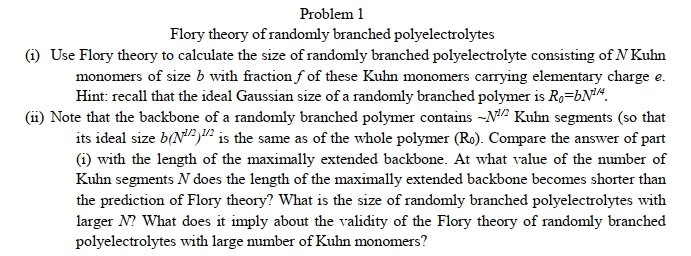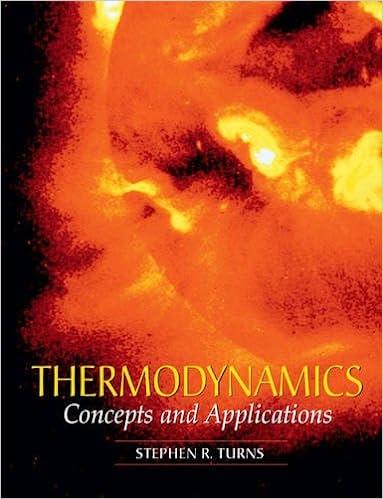Answered step by step
Verified Expert Solution
Question
1 Approved Answer
Problem 1 Flory theory of randomly branched polyelectrolytes ( i ) Use Flory theory to calculate the size of randomly branched polyelectrolyte consisting of N
Problem
Flory theory of randomly branched polyelectrolytes
i Use Flory theory to calculate the size of randomly branched polyelectrolyte consisting of Kuhn
monomers of size with fraction of these Kuhn monomers carrying elementary charge
Hint: recall that the ideal Gaussian size of a randomly branched polymer is
ii Note that the backbone of a randomly branched polymer contains Kuhn segments so that
its ideal size is the same as of the whole polymer Compare the answer of part
i with the length of the maximally extended backbone. At what value of the number of
Kuhn segments does the length of the maximally extended backbone becomes shorter than
the prediction of Flory theory? What is the size of randomly branched polyelectrolytes with
larger What does it imply about the validity of the Flory theory of randomly branched
polyelectrolytes with large number of Kuhn monomers?

Step by Step Solution
There are 3 Steps involved in it
Step: 1

Get Instant Access to Expert-Tailored Solutions
See step-by-step solutions with expert insights and AI powered tools for academic success
Step: 2

Step: 3

Ace Your Homework with AI
Get the answers you need in no time with our AI-driven, step-by-step assistance
Get Started


